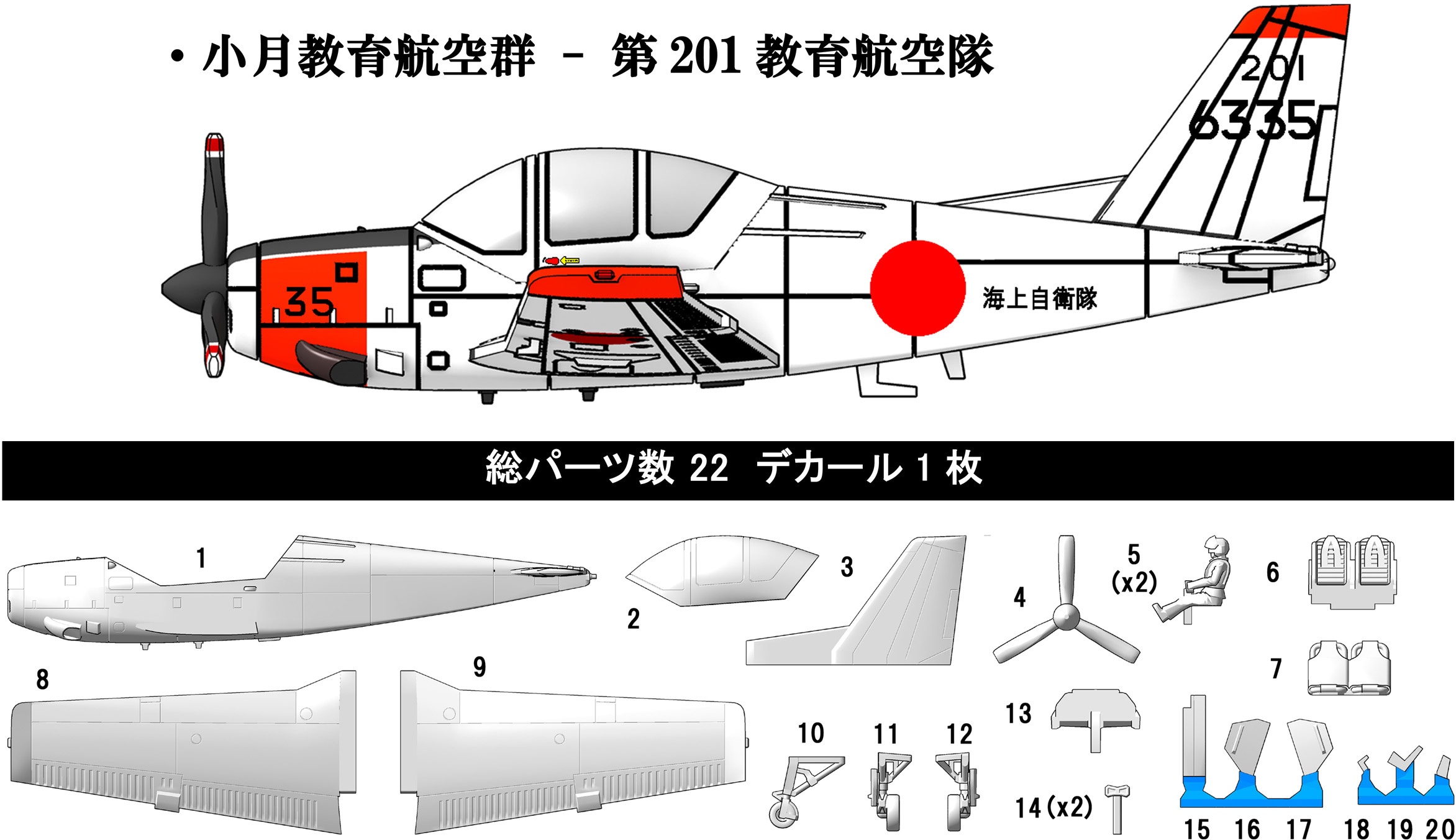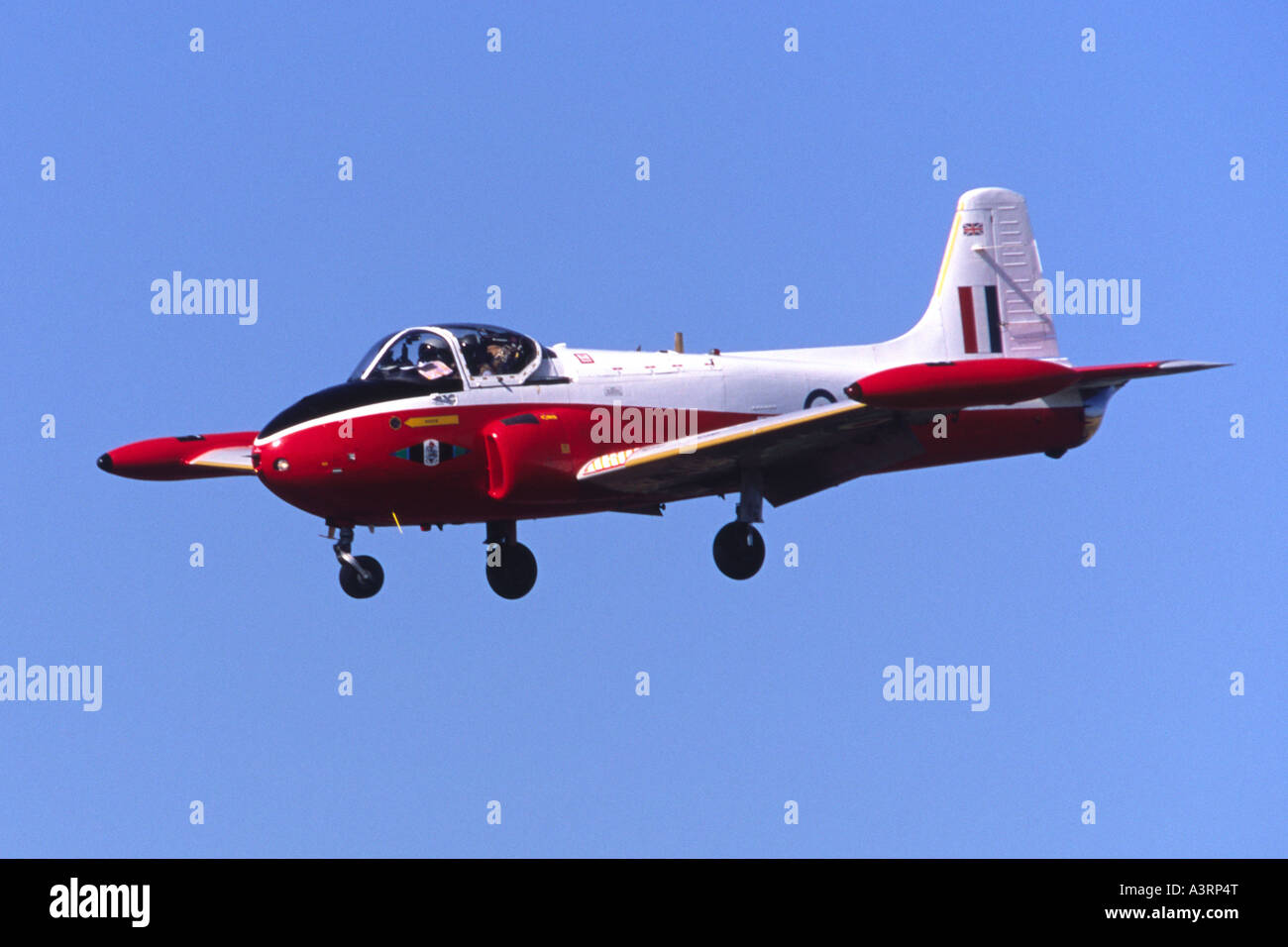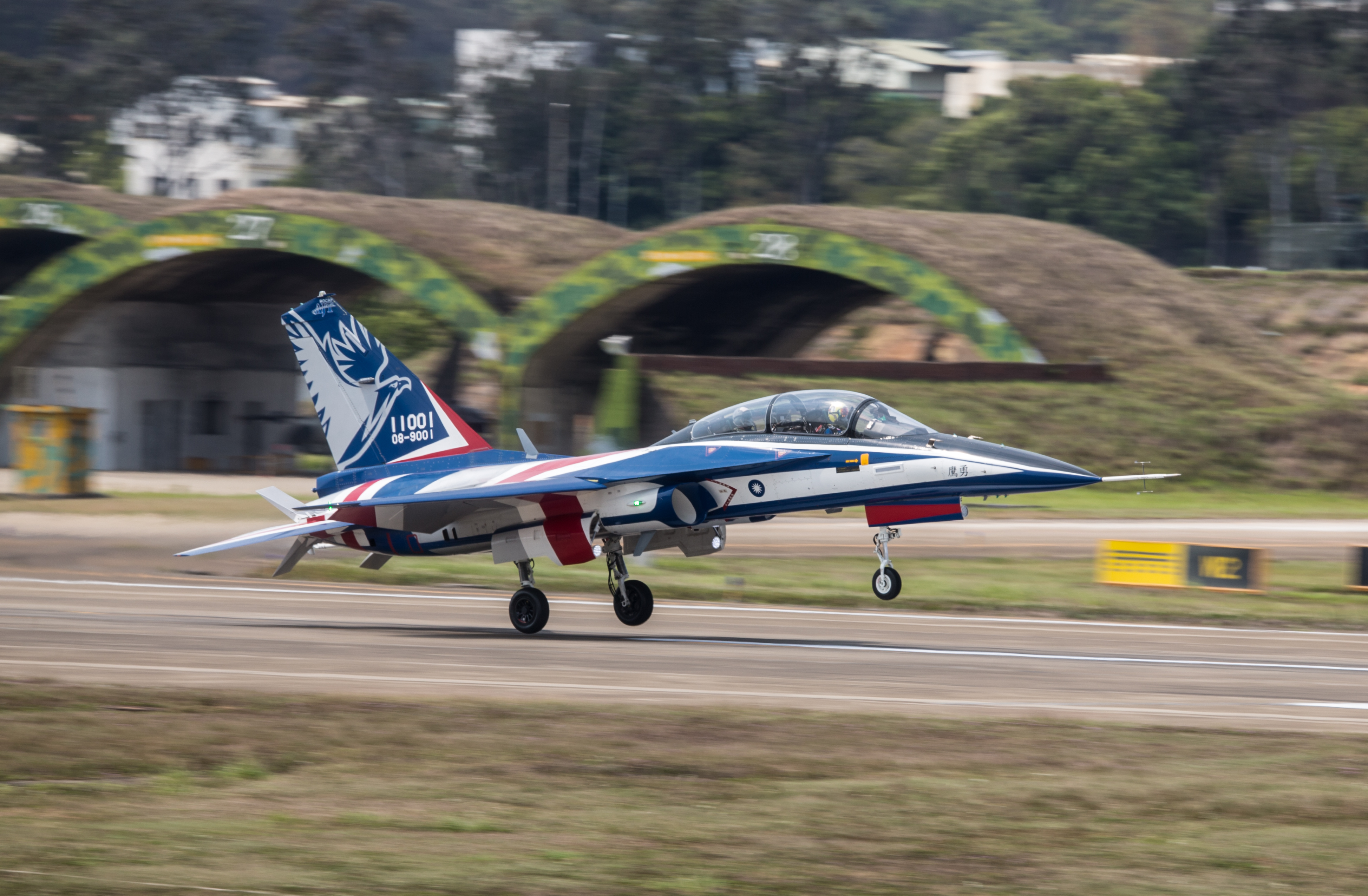T 5 Aircraft - Externally, the T-5 is similar to the F-CK-1 fighter on which it is based, but the design has new features for the training role. (Photo: AIDC)
The Taiwan Aerospace Industries Development Corporation (AIDC) T-5 Yung Yin (Brave Eagle) is in service with the Republic of China Air Force (ROCAF). The second of two Brave Eagle advanced production jet trainers arrived at Taiwan's Taitung Air Base on December 22 last year, where it joined the first Low-Rate Initial Production (LRIP) aircraft, which was delivered on November 28. become Regarding the formal submission, first. The prototype (with AIDC director Ho Kai-hong in the back seat) joined the new aircraft, and the first LRIP aircraft took the pair to Taitung, flying a clear wake formation from the base before landing.
T 5 Aircraft

The first cadre of T-5 teachers successfully completed the first round of training on November 12. The six pilots came from the Air Force Academy, the 1st Fighter Wing, the 3rd Fighter Wing and the 7th Fighter Training Wing and were trained by two instructors from the Aviation Development Center.
Aviation Photographs Of English Electric Lightning T5
ROCAG will use both aircraft for further operational testing and evaluation and to develop a training curriculum. They will be added to other aircraft that will roll off the production line later this year. AIDC plans to begin mass production of the T-5 in March 2023 and deliver 66 aircraft on order between 2026 and 2028.
The first squadron of T-5 Brave Eagles will be based at Taitung Air Base, home of the 7th Airlift Wing and a tactical training and development center. The T-5 will replace the F-5E/F and serve as a frontline fighter trainer. The aircraft will also be based at Kangshan Air Base, home of the Air Force Academy, where it will deploy the Combat Training Group's AT-3s in a basic training role. At the same time, two prototypes delivered in 2021 will continue to undergo development tests to improve and develop this indigenous Taiwanese advanced trainer and light fighter.
The T-5 is a dedicated trainer derivative of the IDF F-CK-1 internal defense fighter. It was developed by AIDC in collaboration with the National Changshan Institute of Science and Technology (NCIST) to meet the ROCAF Advanced Jet Trainer (AJT) requirement and the local AIDC AT-3 trainer and Northrop F- provide an alternative to 5 are used as advanced trainers and advanced fighters. ROCAF plans to retire both types in the early 2020s.
Initially, plans called for a foreign aircraft to meet the AJT requirement, which could be assembled locally, and Taiwan evaluated the KAI T-50 and the Italian master Finmeccanica/Aermacchi (now Leonardo) M346. Taiwan initially selected the M-346, but after Tsai Ing-wen was elected President of the Republic of China (Taiwan) in 2016, the focus shifted to local options.
Aircraft Xw309 (1970 Bac 84 Jet Provost T.5 C/n Eep/jp/973) Photo By Peter Nicholson (photo Id: Ac452920)
President Tsai's Democratic Progressive Party has pursued a policy of developing domestic defense industries, although budget constraints mean that new AJT designs will be based on existing types of aircraft. The three proposed aircraft were the M346, the AT-3 MAX—a modernized version of the current AT-3 with a lightweight composite airframe, updated avionics, a glass cockpit, increased thrust, and a sophisticated training system—and Technology development. The AIDC F-CK-1 Ching Kuo fighter was originally designated XAT-5. Leonardo-Finmeccanica reportedly cut the cost of its M346 proposal by about 25 percent, but Taiwan rejected the new proposal, leaving behind the XAT-5 and modern AT-3 MAX.
Taiwan surprised many in 2017 by officially selecting the XAT-5 (not built as a trainer) as the basis of the TWD68.6 billion ($2.2 billion) program. While AIDC has marketed simplified versions of the IDF's two-seat F-CK-1C/D for Lead-in Training (LIFT) for the past 20 years, the T-5 is a new expression of this approach.
Although based on Ching-Kuo's F-CK-1 airframe design, the T-5 has 80 percent new components and uses more composites in the fuselage to reduce overall weight and improve strength. The wing was redesigned with a "faster" aerofoil section to increase stability at low speeds and low altitudes, as well as increase internal fuel capacity. The manufacturer claims that the new aircraft has lower drag and better angle of attack handling than the F-CK-1.

The Brave Eagle is powered by Honeywell/ITEC F124-200TW afterburner engines. Essentially an unburnt version of the F125 Ching Kuo engine, the Honeywell/ITEC engines would limit the aircraft to subsonic/transonic speeds in level flight. The internal design of the gun avoids the Cheng Kuo, but includes provision for weapons (including an external gun pod). NCIST developed the AESA airborne radar for the T-5 using gallium nitride technology. The AIDC T-5 Brave Eagle (Chinese: 勇鷹; pinyin: Yǒngyīng) is a supersonic jet trainer developed by the Aviation Industrial Development Corporation (AIDC). Taiwan.
File:bac 84 Jet Provost T5, Uk
The Advanced Jet Trainer (AJT) program began in the early 2000s when the Chinese Air Force attempted to replace the fleet with 66 newly built AIDC AT-3 and Northrop F-5 advanced trainers. Three designs proposed a modern, improved version of the AT-3, designated the AT-3 MAX, an evolution of the AIDC F-CK-1 Ching-Kuo fighter known as the XAT-5, or the Italian Ilya Ermachi. M-346 Master.
In 2014 AIDC signed a memorandum of understanding with Ilya Ermachi to assemble M-346 in Taiwan. International Turbine Generator Company (ITEC), a partnership of Honeywell and AIDC, assembles all M-346 generators in Taiwan.
In 2017, it was announced that the XAT-5 had won the tender for development and production to be carried out in partnership with AIDC and the Changshan National Institute of Science and Technology, and was scheduled for delivery in 2026. Have prototypes. . produced and the total cost of the program is estimated at TWD68.6 billion (US$2.2 billion).
AIDC used Blue Magpie from Taiwan Blue Magpie as the name of the project. However, in 2018, the Ministry of National Defense announced a competition to choose an official name for the aircraft. Taiwanese citizens were invited to submit a short proposal and the winner received an award of NTD 30,000.
Tokyo Studies Trainer Replacement Options
On September 24, 2019, President Tsai Ing-wu officially named the new aircraft "Brave Eagle" (Yǒngyīng) at the opening ceremony of the first prototype aircraft.
In 2017, the United States approved the export of components for 132 Honeywell/ITEC F124 engines for the XAT/AT-5.
In 2018, AIDC announced that the first prototype would be commissioned in September 2019 and flight tests would begin in June 2020.
In 2019, Taiwan's Ministry of National Defense testified to the country's legislature that the first flight is scheduled for June 2020, small-scale production will begin in November 2021, and large-scale production will begin in March 2023. become
Aidc T Be5a Brave Eagle By Oscerf On Deviantart
In September 2019, the first of four prototypes of the A1 A2 T1 T2 was presented by Taiwanese President Tsai Ing-w.
In March 2021 CAIDC announced that they had completed internal flight tests and that the Taiwan Air Force would test two prototypes and two initial aircraft that had been delivered about d years earlier.
Most of the internal and operational test flights were completed from Taitung Air Base in July 2021 and most of the operations were conducted over the Pacific Ocean.
The design is based on the AIDC F-CK-1 Ching-Kuo and shares the same genes, but will have 80% new components including the composite body. Compared to the F-CK-1, it will have superior avionics, increased fuel capacity, and will be slightly larger.
T 38 Maintenance Significant To Isr > Air Force > Article Display
To increase stability at low speeds and low altitudes, as well as increase fuel economy.
The F-CK-1 Ram Airscope has been redesigned in partnership with Eaton Corporation with two aluminum laser powder bed fusion printed parts instead of the original 22 parts.
Maggate will provide the original wheels, carbon brakes and brake control systems as they do on the AT-3 and F-CK-1.

More than 55% of its parts are made in Taiwan. The aircraft is reportedly designed from the ground up to perform dual roles in peacekeeping training and wartime.
Package Fuji Trainers (t 5 And T 7) With Associated Scenery And Flight Plans For Fsx/p3dv4 (jyai)
NCSIST is developing the airborne AESA radar for the T-5 Brave Eagle but Taiwanese private company Tron Future Tech has also bid for a gallium nitride-based AESA for the program.
In 2019, it was announced that Pyras Technologies would provide the radar and communications antenna for the platform.
In 2019 Jain reported that a light fighter variant of the AT-5 was planned to replace the Northrop F-5E/F Tiger II fleet. Former Fuji KM-2. Stud and teacher sit side by side.
Fuji Heavy Industries developed the Fuji T-5 as a replacement for the piston-engined Fuji KM-2 (a development of the Beechcraft T-34 Mtor) as the primary trainer for the Japanese Maritime Self-Defense Force. Fuji rebuilt the KM-2 with an Allison Model 250 turboprop generator in place of the original Lycoming piston generator, and the KM-2D first flew on June 28, 1984.
Aircraft G Bwsg (1970 Bac 84 Jet Provost T.5 C/n Eep/jp/988) Photo By Derek Flewin (photo Id: Ac1204970)
The KM-2Kai is a further development of the KM-2D, featuring a modern cockpit with side-by-side seats and a sliding canopy instead of the side doors of the original KM-2 car type.
The T-5 is an all-metal low-wing cantilever
T 28 aircraft, aircraft mechanic t shirt, bd 5 aircraft, aircraft t, thorp t 18 aircraft, icon a 5 aircraft, aircraft t hangars, aircraft maintenance t shirts, ww2 aircraft t shirts, piper aircraft t shirt, military aircraft t shirts, t 38 aircraft

0 Comments